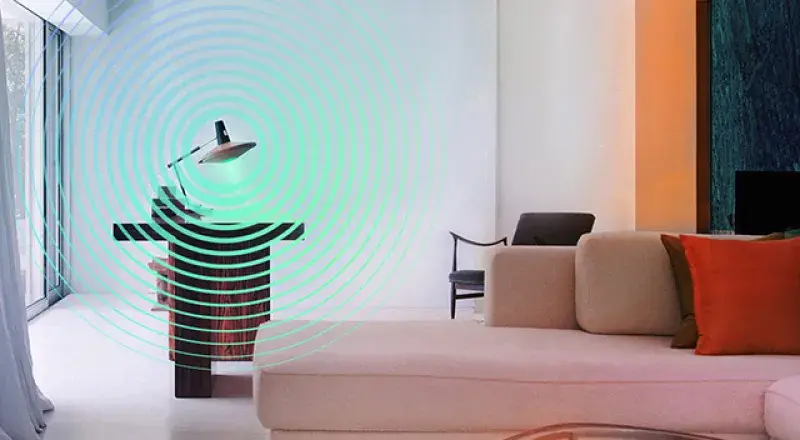
What is the Green Light Signal?
The Green Light Signal is powered by carbonintensity.org.uk, a carbon intensity forecasting tool built by the National Energy System Operator (NESO), The Environmental Defense Fund Europe, The University of Oxford and WWF. When the electricity in your area is being supplied mainly from low-carbon sources, such as wind or solar, that’s when the signal activates.
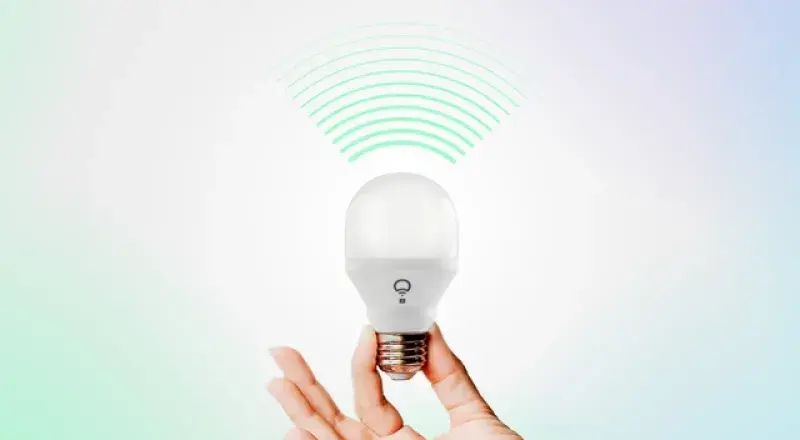
Putting the power in your hands
You'll instantly know that the electricity coming into your home has a low carbon intensity, so you can feel positive about using electricity at these times because it’s coming from sources that are cleaner and greener. If you wanted to adjust your energy usage so you’re using more clean and green electricity and less from fossil fuels, you now have that option. It’s simple.
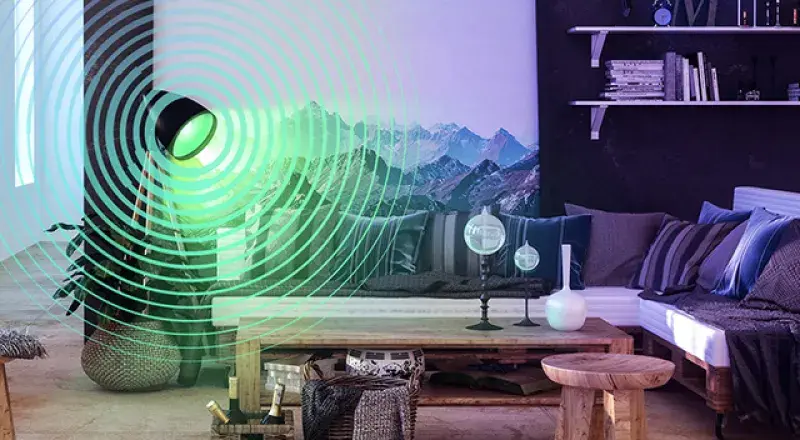
The Green Light Signal bulb
The Green Light Signal bulb can be used with any standard table or floor lamp and can sit discreetly in the corner of the room that you use most often. When the electricity in your local area starts to be supplied mainly from clean or green energy sources, such as wind or solar, the magic happens and the bulb will glow green. Then it’s time to charge your electric vehicle, put on a hot wash, run your tumble dryer, or just feel good about the progress we’re making towards net zero.
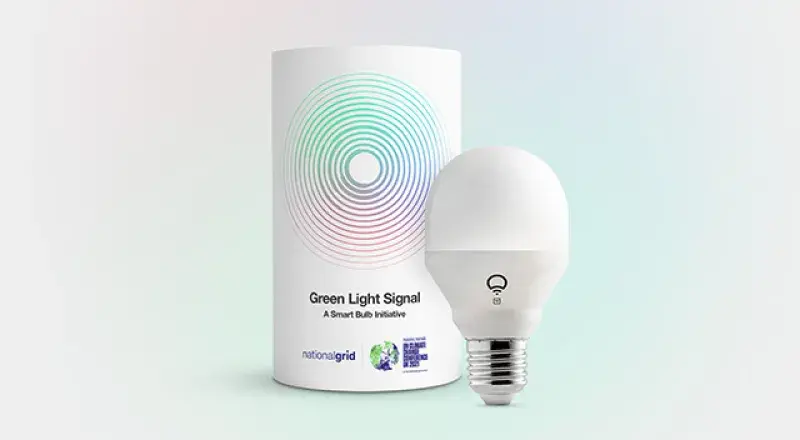
About the bulb
To create your own Green Light Signal you’ll need the 'LIFX Mini Colour' bulb. Not only are they super simple to set up, they’re also 20% more efficient than their closest competitor, which is better for the planet and your energy bills.
You can check out the specs and purchase your own 'LIFX Mini Colour' bulb at Amazon and other retailers. Make sure you select the appropriate fitting for your lamp, e.g. screw fitting or bayonet.
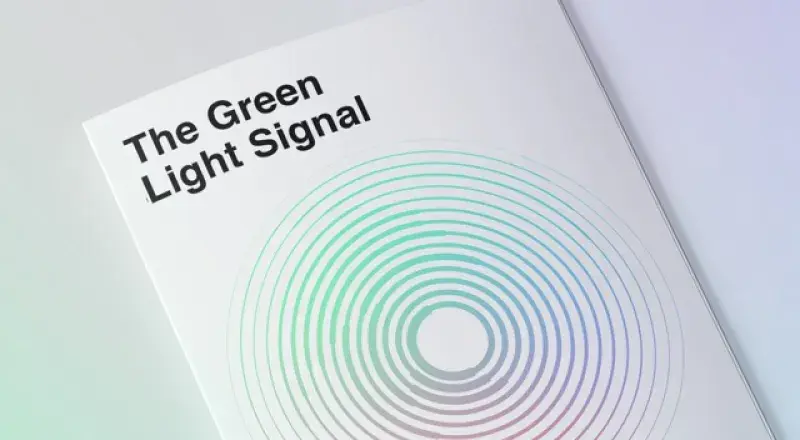
How to activate guide
This guide will walk you through the set-up of your bulb and give you some ideas on what to do when it goes green. Set-up will take about 10-15 minutes and it’s super simple to do, even for the least technology-minded among us. Ready? Well then, let’s go!
- Find a lamp that’s central, but not essential. With the power off, screw your bulb into your lamp. If you’ve got a bayonet fixture, fit the adaptor in your pack.
- Switch the lamp on – the bulb should now shine with a steady white light.
- Head to your app store of choice to download the LIFX app and follow the app prompts to set up an account – making sure you validate any emails received as part of the process – and connect your bulb to the internet.
- Once your bulb is connected, you will be able to control it via the app.
- Then, head back to your app store to download the IFTTT app and follow the app prompts to set up an account.
- Open IFTTT app and search ‘Green Light Signal’ to find our applet and hit connect. The applet will prompt you to connect your LIFX account. Do this by logging into it when prompted.
- Configure your settings by filling in your postcode and then select the LIFX bulb to turn it into a Green Light Signal. Leave the rest of the dropdowns unchanged.
- When the systems are connected, tap 'Check now'. When the app says 'Check completed', the bulb should be receiving the carbon intensity data and will now turn green, assuming the carbon intensity levels are low enough.
- To check that you’re getting the right reading, head to carbonintensity.org.uk. Scroll down to the map and identify your area. If it’s shaded green, the bulb will shine green. If it’s shaded yellow, orange or red, the bulb will be off until the carbon intensity levels become 'low' or 'very low'.
- What now? Well, when the bulb goes green, you go green! It’s time to feel positive about powering up. Hit a snag? Check out our troubleshooting guide below.
- Always remember to turn the bulb on or off via the app, not by the mains or lamp switch.
If your bulb is struggling to connect, check the lamp is switched on at the mains. Then check your internet connection. Like many smart home devices, LIFX lights connect to the 2.4GHz band of Wi-Fi, not 5GHz. If you have more than one available network on your router, this could mean you are connected to 5GHz and need to try your other network. All Wi-Fi routers have a 2.4GHz band, so if you only see one network, don’t worry, you’re already on the right one.
If you're having issues connecting IFTTT to your LIFX bulb, check the following:
- Make sure your phone and bulb are connected to the same Wi-Fi network.
- Make sure you have the latest LIFX app or LIFX bulb firmware. If you already have LIFX bulbs you might need to update the app. The app will automatically offer to update your firmware if a new version is available – just follow the prompts.
- Check that you are linking to the correct LIFX Cloud account in your IFTTT app. It needs to be the same one you’ve used to register the bulb.
If you are still having issues, please:
- log into your LIFX Cloud account at cloud.lifx.com
- revoke access for IFTTT.com
- reconnect the service in the proper location: IFTTT.com.
The battle against climate change can feel a bit overwhelming. But progress is being made.
There’s still a lot to do but, when it comes to the energy we make and use, there are reasons for us all to feel positive. We believe that with positivity we can encourage everyone to take even greater steps to achieve our climate goals.
The bulb helps you see the transition to clean energy with your own eyes. Once the bulb turns green, you’ll know that the electricity powering your home is clean or green and has a low carbon intensity. This is happening more and more often as we continue to break green records. Did you know:
- Last year we had our first ever coal-free Christmas.
- Last year was also the greenest ever year for Britain’s electricity system, with average carbon intensity levels 66% lower than they were just seven years ago.
- 13th February 2021 saw a new record for the highest ever level of wind power (17.5GW) produced. On average wind now supplies a quarter of all our electricity, but in August 2020 it made up a huge 60% of our supply.
- May 2020 was the greenest month on record. This was in part because we saw records broken for solar power; at times solar power provided more than a third of all our electricity needs.
- We were totally coal-free from 10th April to 16th June 2020. This is our longest-ever run.
- Zero carbon energy made up nearly 80% of Great Britain’s power on 5th April 2021 – a new green record!
Want to feel positive about the energy you’re using? Here are some fun ideas about what you can do when the bulb goes green. How about...
- Stream: Stream a film or play a game online.
- Cook: Turn up the heat on your electric hob and cook up a storm.
- Heat: Feel good that your kettle or electric boiler is heating up with clean energy.
- Clean: Can you beat the bulb and get all your laundry, tumble drying and vacuuming done before the light goes off?
- Create: Make music, movies, social filters, or digital art whilst the bulb glows green.
- Charge: Plug in your electric vehicle.
Because together we can reach net zero.
#PowerOfAll
The smart bulbs and the adaptors that are being provided (the “Equipment”) have been purchased from third parties, and Daniel J. Edelman Limited (“Edelman”) and National Grid plc (“National Grid”) shall have no responsibility or liability in connection therewith. To the fullest extent permitted by law, Edelman and National Grid give no warranty as to the performance of the Equipment and exclude liability arising from its use.

What is the Power of All?
History teaches us that, when people come together and work towards a shared goal, what was once thought impossible can suddenly become reality.
Explore energy
Energy explained
Ever wondered what net zero means? Want to know how windfarms make energy? Or how electricity and gas gets to you? Here we answer all your energy questions.